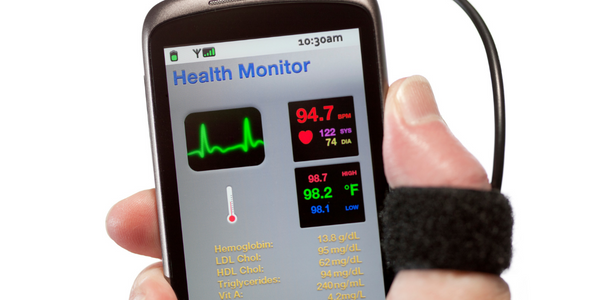Driving Quality Across Supply Chain to Highest Levels
Customer Company Size
SME
Region
- America
Country
- United States
Product
- IntraOp® Mobetron®
- Arena
- Arena Analytics
Tech Stack
- Arena Platform
- Arena Analytics
Implementation Scale
- Enterprise-wide Deployment
Impact Metrics
- Customer Satisfaction
- Productivity Improvements
- Digital Expertise
Technology Category
- Analytics & Modeling - Predictive Analytics
- Functional Applications - Enterprise Resource Planning Systems (ERP)
- Application Infrastructure & Middleware - Data Visualization
Applicable Industries
- Healthcare & Hospitals
- Life Sciences
Applicable Functions
- Quality Assurance
- Product Research & Development
Use Cases
- Predictive Quality Analytics
- Regulatory Compliance Monitoring
- Remote Asset Management
Services
- Software Design & Engineering Services
- System Integration
- Training
About The Customer
IntraOp Medical Corporation is the pioneer in portable electron-beam Intraoperative Radiation Therapy (IORT). The IntraOp® Mobetron® has transformed cancer treatment by bringing radiation technology into the operating room, uniting radiation oncology and surgery. For patients and their families, this means markedly shorter treatment and recovery times, improved outcomes, greater comfort, and quality of life. To ensure the teams execute on product realization at the highest levels of quality and adhere to regulations, IntraOp uses Arena for their critical product and quality management processes.
The Challenge
As an FDA-regulated company, IntraOp must not only design and produce a complex product with electro, mechanical, and software components, but do so while meeting all FDA 21 CFR 820, EU Medical Device Directive (MDD), ISO 13485, Health Canada, and other regulations requirements. So IntraOp needed more than a system to manage all the product details, changes to product, and collaboration efforts with the teams. They also needed a quality management solution to ensure absolute regulatory compliance. IntraOp chose the Arena platform for both product and quality management. After IntraOp implemented Arena to manage the product and quality processes, the team took the next step to business analytics with Arena Analytics. They wanted Analytics to provide critical day-to-day insights into quality process progress as well as provide confidence that they can meet regulatory requirements.
The Solution
IntraOp chose the Arena platform for both product and quality management. After implementing Arena to manage the product and quality processes, the team took the next step to business analytics with Arena Analytics. They wanted Analytics to provide critical day-to-day insights into quality process progress as well as provide confidence that they can meet regulatory requirements. As An Nguyen, Director of Regulatory Affairs and Quality Assurance, shares, 'Information from the Arena Quality module, such as CAPA and nonconformances visualized through the Arena Analytics dashboard, allows us to monitor the up-to-date performance of our product process, see the areas and suppliers which have unfavorable quality trends, and plan for our improvements or preventive actions.' Before implementing Arena Analytics, IntraOp depended on lengthy, labor-intensive manual data crunching to see what was happening with quality processes. 'Before Arena Analytics, we had to export quality process information to Excel, then use pivot tables and charts to manually create dashboards. Now, with Analytics we monitor quality performance and see our up-to-date progress automatically. The value of Arena Analytics is very high,' explains An.
Operational Impact

Case Study missing?
Start adding your own!
Register with your work email and create a new case study profile for your business.
Related Case Studies.

Case Study
Hospital Inventory Management
The hospital supply chain team is responsible for ensuring that the right medical supplies are readily available to clinicians when and where needed, and to do so in the most efficient manner possible. However, many of the systems and processes in use at the cancer center for supply chain management were not best suited to support these goals. Barcoding technology, a commonly used method for inventory management of medical supplies, is labor intensive, time consuming, does not provide real-time visibility into inventory levels and can be prone to error. Consequently, the lack of accurate and real-time visibility into inventory levels across multiple supply rooms in multiple hospital facilities creates additional inefficiency in the system causing over-ordering, hoarding, and wasted supplies. Other sources of waste and cost were also identified as candidates for improvement. Existing systems and processes did not provide adequate security for high-cost inventory within the hospital, which was another driver of cost. A lack of visibility into expiration dates for supplies resulted in supplies being wasted due to past expiry dates. Storage of supplies was also a key consideration given the location of the cancer center’s facilities in a dense urban setting, where space is always at a premium. In order to address the challenges outlined above, the hospital sought a solution that would provide real-time inventory information with high levels of accuracy, reduce the level of manual effort required and enable data driven decision making to ensure that the right supplies were readily available to clinicians in the right location at the right time.

Case Study
Gas Pipeline Monitoring System for Hospitals
This system integrator focuses on providing centralized gas pipeline monitoring systems for hospitals. The service they provide makes it possible for hospitals to reduce both maintenance and labor costs. Since hospitals may not have an existing network suitable for this type of system, GPRS communication provides an easy and ready-to-use solution for remote, distributed monitoring systems System Requirements - GPRS communication - Seamless connection with SCADA software - Simple, front-end control capability - Expandable I/O channels - Combine AI, DI, and DO channels

Case Study
Driving Digital Transformations for Vitro Diagnostic Medical Devices
Diagnostic devices play a vital role in helping to improve healthcare delivery. In fact, an estimated 60 percent of the world’s medical decisions are made with support from in vitrodiagnostics (IVD) solutions, such as those provided by Roche Diagnostics, an industry leader. As the demand for medical diagnostic services grows rapidly in hospitals and clinics across China, so does the market for IVD solutions. In addition, the typically high cost of these diagnostic devices means that comprehensive post-sales services are needed. Wanteed to improve three portions of thr IVD:1. Remotely monitor and manage IVD devices as fixed assets.2. Optimizing device availability with predictive maintenance.3. Recommending the best IVD solution for a customer’s needs.

Case Study
HaemoCloud Global Blood Management System
1) Deliver a connected digital product system to protect and increase the differentiated value of Haemonetics blood and plasma solutions. 2) Improve patient outcomes by increasing the efficiency of blood supply flows. 3) Navigate and satisfy a complex web of global regulatory compliance requirements. 4) Reduce costly and labor-intensive maintenance procedures.

Case Study
Cloud-based healthcare solution for Royal Philips
Royal Philips wanted to launch its cloud-based healthcare solution HealthSuite Digital Platform in China to deliver services to help cope with challenges related to urbanization and population growth. Philips wanted to achieve this goal by combining mobile, cloud computing and big data technologies. To bring this platform and product to market, Philips required cloud computing and local technical service capabilities in China, in addition to a flexible IT infrastructure that could handle user requests.







